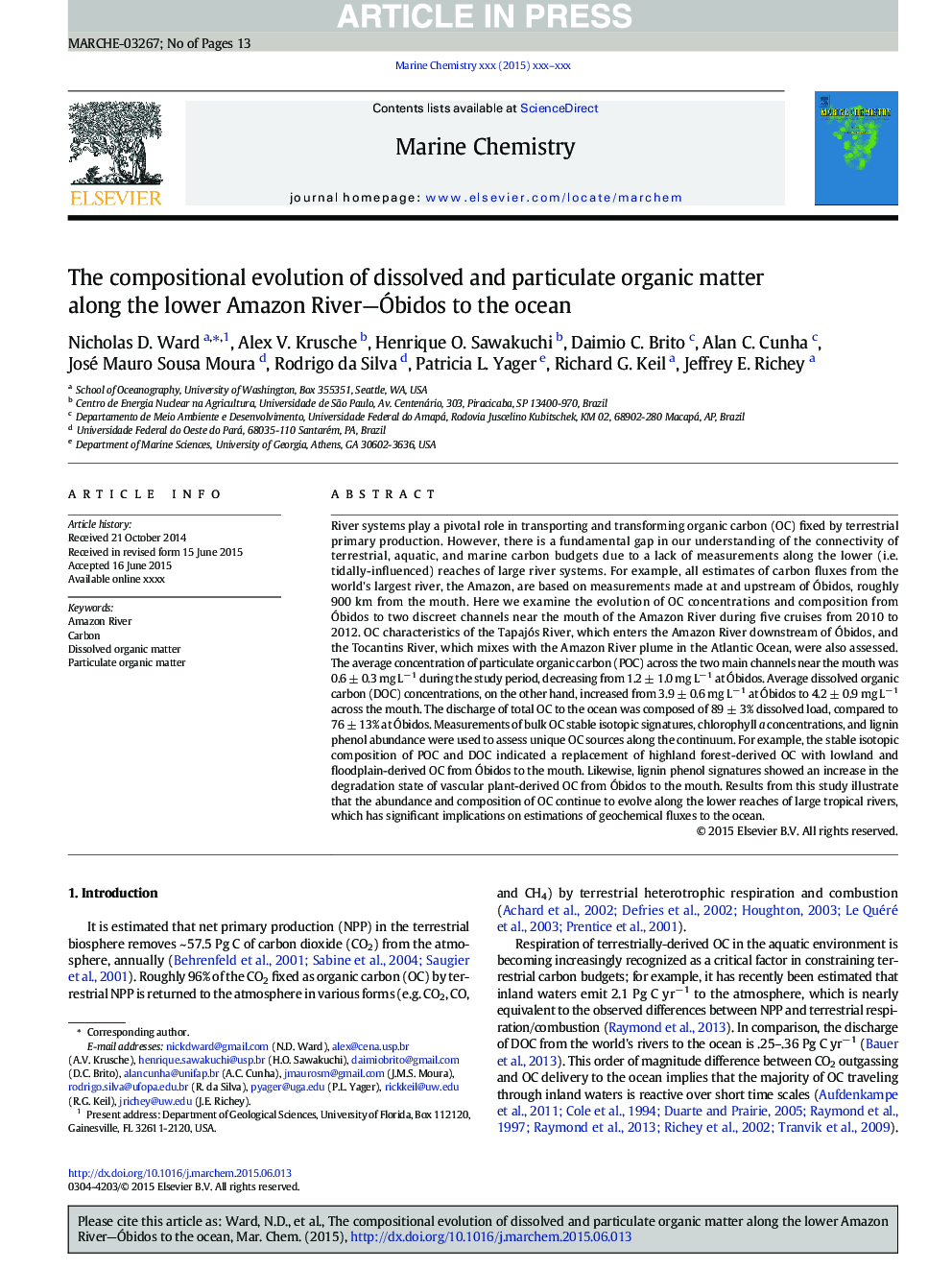| Article ID | Journal | Published Year | Pages | File Type |
|---|---|---|---|---|
| 10565643 | Marine Chemistry | 2015 | 13 Pages |
Abstract
The average concentration of particulate organic carbon (POC) across the two main channels near the mouth was 0.6 ± 0.3 mg Lâ 1 during the study period, decreasing from 1.2 ± 1.0 mg Lâ 1 at Ãbidos. Average dissolved organic carbon (DOC) concentrations, on the other hand, increased from 3.9 ± 0.6 mg Lâ 1 at Ãbidos to 4.2 ± 0.9 mg Lâ 1 across the mouth. The discharge of total OC to the ocean was composed of 89 ± 3% dissolved load, compared to 76 ± 13% at Ãbidos. Measurements of bulk OC stable isotopic signatures, chlorophyll a concentrations, and lignin phenol abundance were used to assess unique OC sources along the continuum. For example, the stable isotopic composition of POC and DOC indicated a replacement of highland forest-derived OC with lowland and floodplain-derived OC from Ãbidos to the mouth. Likewise, lignin phenol signatures showed an increase in the degradation state of vascular plant-derived OC from Ãbidos to the mouth. Results from this study illustrate that the abundance and composition of OC continue to evolve along the lower reaches of large tropical rivers, which has significant implications on estimations of geochemical fluxes to the ocean.
Related Topics
Physical Sciences and Engineering
Chemistry
Chemistry (General)
Authors
Nicholas D. Ward, Alex V. Krusche, Henrique O. Sawakuchi, Daimio C. Brito, Alan C. Cunha, José Mauro Sousa Moura, Rodrigo da Silva, Patricia L. Yager, Richard G. Keil, Jeffrey E. Richey,
